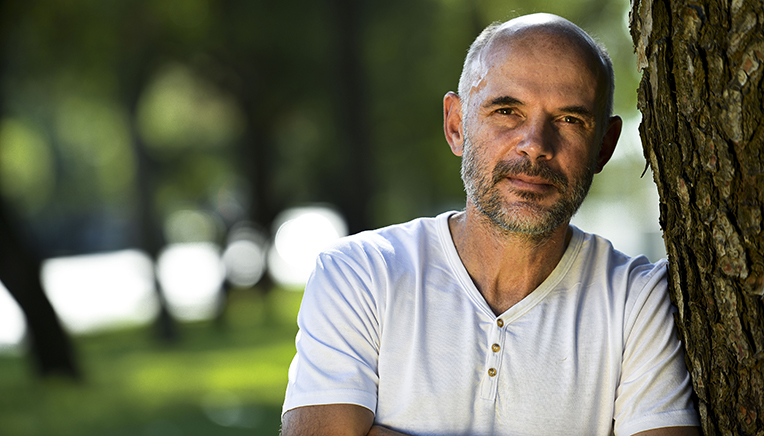Any translation work is a difficult task to take on, but for Prof Morgan, Head of the Division of French at the UFS, translating Kamphoer into French was worthwhile. “The biggest advantage (of translation) is that more people can read the novel. Without translation, different cultures do not know each other,” said Prof Morgan. The only way of knowing existing languages is through translation.
This is the third translation of the novel. The first translation was into Dutch and the second into English. “I work mainly in the French-Afrikaans language pair and thought the French would be interested in this story,” Prof Morgan said.
Kamphoer author bursting with pride
Dr Francois Smith, a lecturer in the same department as Prof Morgan, has great appreciation for his colleague. “I am very grateful for the translation and also very proud of it. Someone who translates your book reads it with the greatest love and attention,” he said. The first reviews published in France are full of praise. “It seems that Prof Morgan has succeeded in giving Kamphoer a new and powerful life in French.”
Recently, Dr Smith was also named as the runner-up in the Great Novel Competition for his book Die getuienis.
 Dr Francois Smith, author of the book Kamphoer. Photo: Mlungisi Louw
Dr Francois Smith, author of the book Kamphoer. Photo: Mlungisi Louw
Historical bond with the French
The historical connection with the French was another reason for translating Kamphoer, since they (the French) supported the Boer forces during the Anglo-Boer War. The storyline for Kamphoer is based on this war. “French readers like historical novels and history in general. Therefore, there would be a potential reading public,” Prof Morgan said.
Her own love for the history of this war, her language skills, and the required background were the winning recipe for the skilful translation of the novel. “I enjoyed reading the novel – a requirement when you are working as a translator for months on a text,” she said.

Translation not an easy process
The best and only French-Afrikaans dictionary dates from the 1950s. According to Prof Morgan, translation is a very difficult process, as translators and interpreters normally translate into their mother tongue and not the other way around. “The translation process with any novel is handled by two publishers; in this case, Tafelberg (South Africa) and Actes Sud (France),” Prof Morgan said. The translator is appointed after that. Prof Morgan worked with Georges Lory, a well-known French translator who understands Afrikaans.
With unique words and phrases in Afrikaans, it can be quite a struggle to translate from Afrikaans into French. Words that are inherent to a language and/or culture can be difficult to translate. “One of the challenges was also the fact that the main character, Susan Nell, at times quoted from the Dutch State Bible written in seventeenth-century Dutch. What do you do with this? Or with the Afrikaans onomatopoeia of bird sounds?” Prof Morgan explained.
Future plans for more Afrikaans-French translations?
Future plans for the translation of other books into French unfortunately do not depend on Prof Morgan, because the contracts are concluded between publishers, and because Afrikaans novels are usually first translated into English. “Therefore, if translation errors occur in the English version, the French translator does not realise this,” Prof Morgan said. There are also only three French translators who can translate directly from Afrikaans.